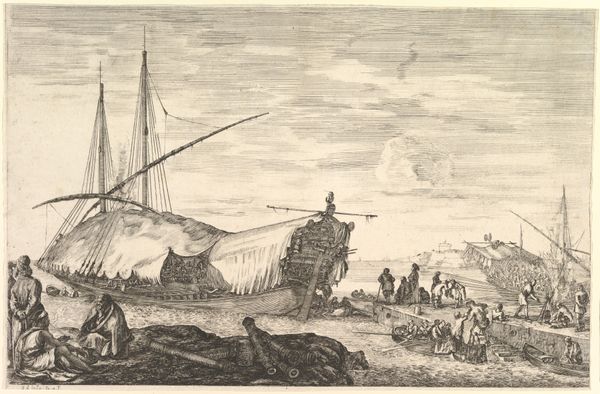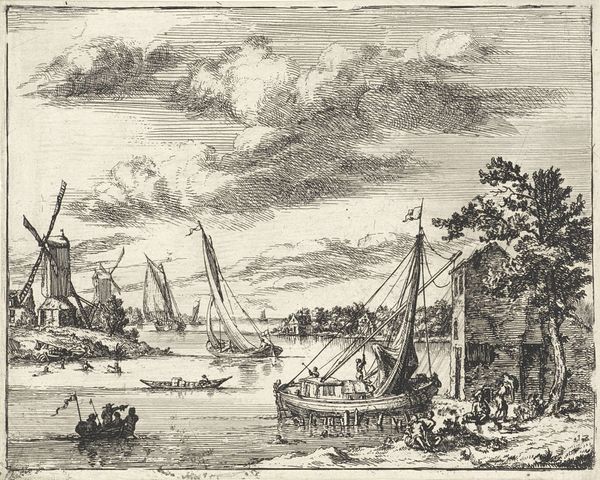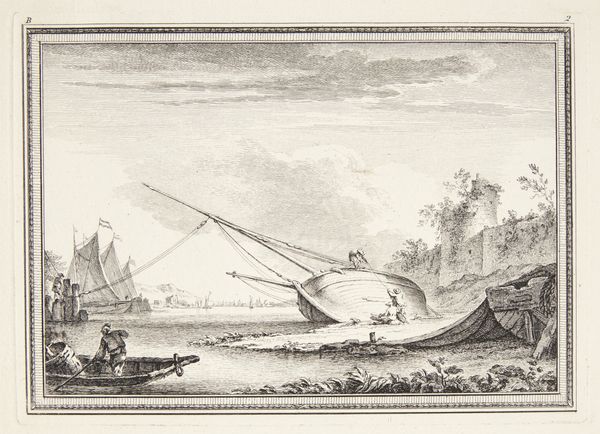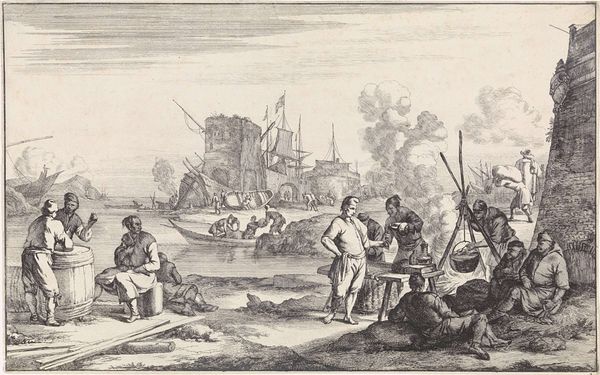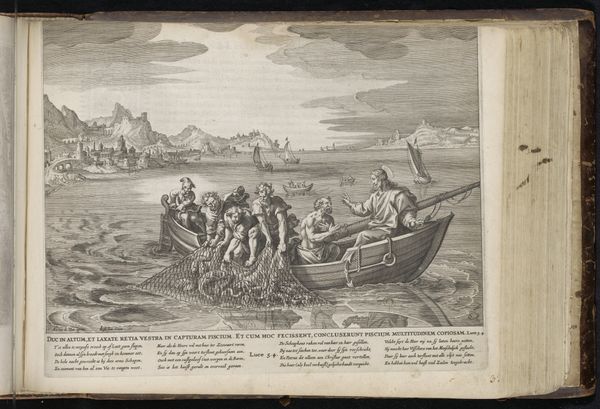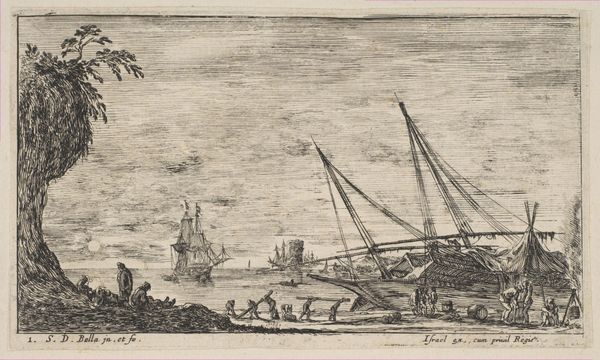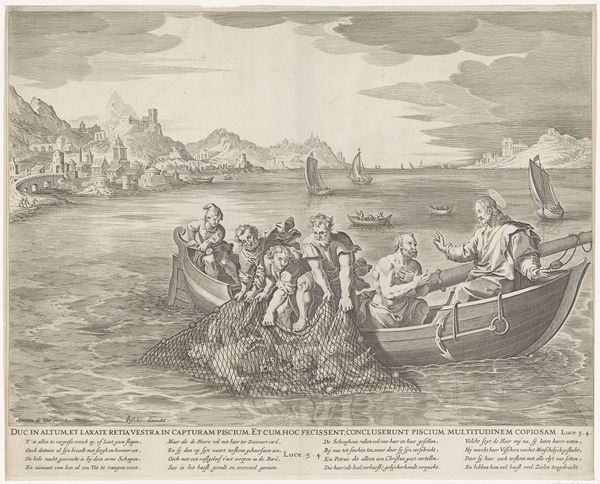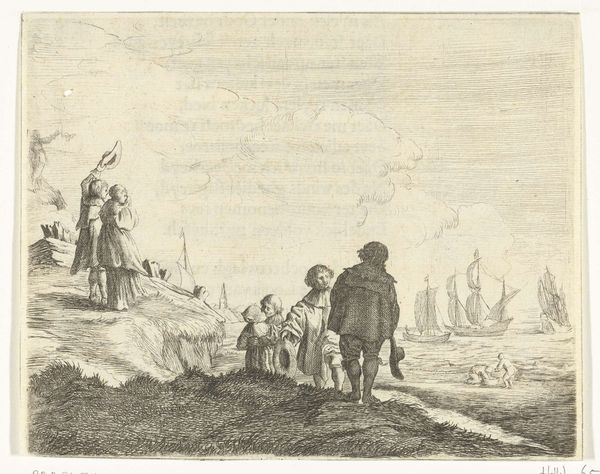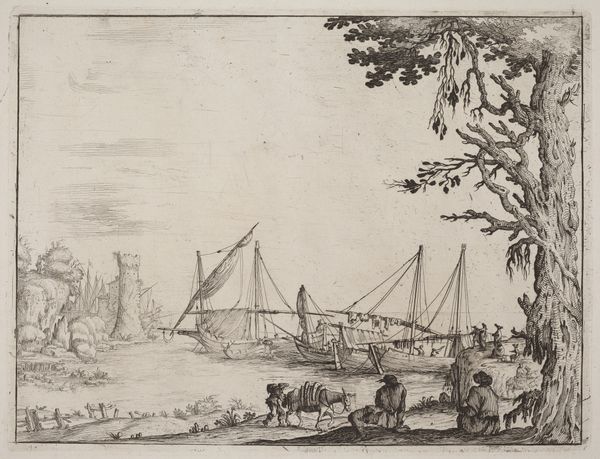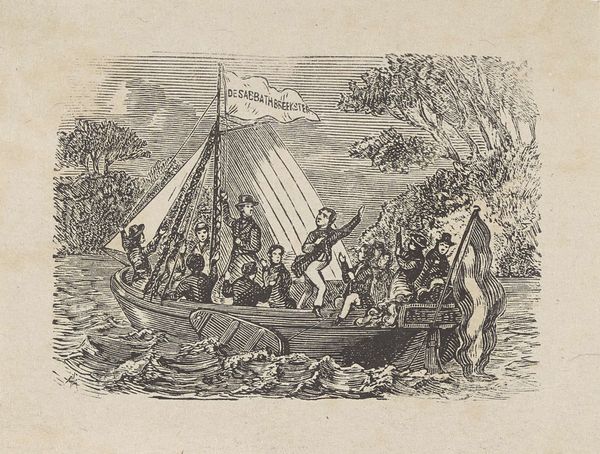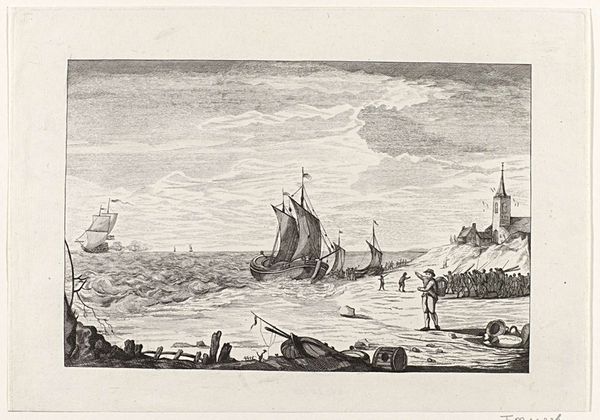![Illustration til Adam Olearius, “Persianischer Rosenthal von einem Sinnreichen Poeten Schich Saadi […]”, Schleswig 1660 by Christian Rothgiesser](/_next/image?url=https%3A%2F%2Fd2w8kbdekdi1gv.cloudfront.net%2FeyJidWNrZXQiOiAiYXJ0ZXJhLWltYWdlcy1idWNrZXQiLCAia2V5IjogImFydHdvcmtzLzhhMTZhOGU1LWJlYzEtNDZjYi04YmQ2LThhYzU4MjQ3Y2M1NS84YTE2YThlNS1iZWMxLTQ2Y2ItOGJkNi04YWM1ODI0N2NjNTVfZnVsbC5qcGciLCAiZWRpdHMiOiB7InJlc2l6ZSI6IHsid2lkdGgiOiAxOTIwLCAiaGVpZ2h0IjogMTkyMCwgImZpdCI6ICJpbnNpZGUifX19&w=3840&q=75)
Illustration til Adam Olearius, “Persianischer Rosenthal von einem Sinnreichen Poeten Schich Saadi […]”, Schleswig 1660 1660
0:00
0:00
print, engraving
#
narrative-art
#
baroque
# print
#
landscape
#
history-painting
#
engraving
Dimensions: 100 mm (height) x 133 mm (width) (bladmaal)
Curator: I find myself really drawn to this little scene, created as an illustration in 1660 for Adam Olearius’s book, “Persianischer Rosenthal,” a German translation of work by the Persian poet Saadi. It’s quite detailed for a small engraving. What strikes you first, Editor? Editor: Goodness, pure theatrical drama! A tiny, precarious stage with a lone figure center, arms aloft as if blessing a somewhat crowded boat of characters heading towards an implausibly idyllic cityscape. I sense both peril and promise here. Curator: Precisely! These images were designed to accompany and amplify the narratives within the text, serving almost as a visual portal into the world of Saadi’s poetry. The engraving would have amplified Olearius’s accounts and lent them a veneer of veracity and historical grounding, all within the cultural politics of representation in 17th century Europe. Editor: Ah, so not quite documentation but more like staging? What about that figure on the post... they seem utterly unconcerned that they’re about to be swept away! Is this stoicism, arrogance, divine intervention... or perhaps he’s just REALLY good at balancing? Curator: Well, these were likely allegorical. We need to think of these figures within the context of both European interpretations of Persian literature, the symbolic languages in use at the time, and Rothgiesser’s (the artist) style, which tends towards narrative density. We can consider it through the lens of representation and power. Editor: Of course, layers upon layers of interpretation! And it’s easy to get swept up—a bit like the characters in the boat heading for their imagined destination. Do you think audiences felt transported when they saw it? I’d certainly want to read this translation. Curator: I believe the audiences certainly found in the text and in these illustrations an appeal that fulfilled both intellectual and aesthetic functions; they were encouraged to believe that it brought a sense of access to the Orient, that up to that point had eluded them. Editor: What a thought! And so, these images, perhaps even inadvertently, were not mere illustrations, but carefully constructed vessels of meaning and instruments in building a new idea about the self and about distant and romantic lands. It’s both deeply exciting, and deeply troubling. Curator: Yes, exactly, our historical journey through a singular engraving brings us full circle. Thank you for sharing that perceptive outlook!
Comments
No comments
Be the first to comment and join the conversation on the ultimate creative platform.
